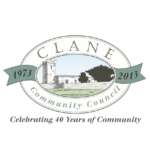Shiatsu has triumphed over it’s unusual pronunciation to become on of the most popular alternative therapies in Ireland. So it’s about time we looked at the part time course options available. . .
The word Shiatsu comes from the Japanese words shi (finger) and atsu (pressure). It is a massage technique which originated in Japan and is now regarded as a healing art that treats the whole person.
Shiatsu practitioners use their thumbs, palms and fingers (and sometimes knees and feet) to apply pressure to different particularly sensitive areas of the body. Advocates say that shiatsu is a holistic, preventative healthcare therapy that effects the energy pathways of the body and rebalances the ki-energy flow – with benefits on physical, emotional and mental levels.
‘Ki’ (or ‘qi’) is a fundamental concept of ancient East Asian culture. You can’t really translate ‘ki’ directly into English, but the concept has to do with elemental energy flows or life forces. These forces are a real part of the world around us, and also flow through our own bodies. The idea in shiatsu is to align your ‘ki’ energies properly, so that any imbalances in your body are smoothed out and emotional or physical stresses or traumas are alleviated.
Shiatsu practitioners treat stresses, strains and pains by diagnosing where the problems are and then massaging the skin along certain important “meridian lines” or applying pressure to the important “pressure points”, which are similar to the points in which acupuncture needles are stuck. This is usually done by a qualified therapist, although it is also possible to treat yourself.
Although shiatsu is a traditional Japanese therapy, and is still very popular in Japan today, its popularity in Europe and America is a relatively recent phenomenon. This emergence in shiatsu recognition is no doubt linked to the growth in interest in alternative therapies and Eastern spirituality that has spread through the Western world in recent years.
Shiatsu is used to treat a wide range of problems and ailments, although we wouldn’t recommend it for a broken leg. On a basic level the massage techniques are used to alleviate stress and fatigue, but shiatsu have also been used in the treatment of back pain, asthma, sciatica and digestive problems. Some therapists claim shiatsu can boost the immune system and generally strengthen the body. Alternatively, shiatsu is popular with people who don’t have specific physical ailments but who are feeling the effects of stress and fatigue, and with those who wish to learn more about different cultures and ways of life.
The shiatsu part-time course options available at Irish schools and institutes are many and varied, ranging from professional training courses which will enable you to become a highly qualified therapist, to evenings where more basic introductory methods of shiatsu are taught and practiced. Most beginners’ courses are fairly straightforward, and you will learn basic techniques and practices to get you started on helping out family members, friends and partners. The more intensive courses will involve a greater study of the history, ideas and principles of shiatsu, and also further practice and tips.
Shiatsu can also come as a package with other holistic and alternative therapies, such as reiki, yoga, Indian head massage, reflexology and aromatherapy. Some shiatsu courses also explore healthy eating, meditation, breathing and the basics of traditional Chinese medicine.
It is now possible to get a quick shiatsu massage at work. A number of forward thinking companies now provide regular 20 minute massages as a perk to their staff. Employers see it as a good way to relax and distress their employees, with knock-on increase in energy levels and productivity. (Anybody worried about the possibilities for embarrassment at a shiatsu nightcourse might be relieved to learn that it the “patient” usually remains fully clothed throughout a shiatsu procedure. )
Shiatsu is not an exact science with strict rules, and there are many different methods and ways of going about it. Different schools and practitioners will have developed their own courses and practices after learning what works for them. As we always say when talking about alternative medicines it is a good idea to go in with your eyes open and not expect shiatsu to work any miracles. Shiatsu therapies are generally more suitable for treating muscle pains and general stresses than curing more serious or emergency complaints.
Bearing all this in mind, many people find a shiatsu class a worthwhile and beneficial way of spending a few hours each week. Whether you are interested in becoming a qualified shiatsu practitioner, or just fancy a relaxing evening learning more about an ancient Eastern art, a shiatsu course could be just the thing for you.
















